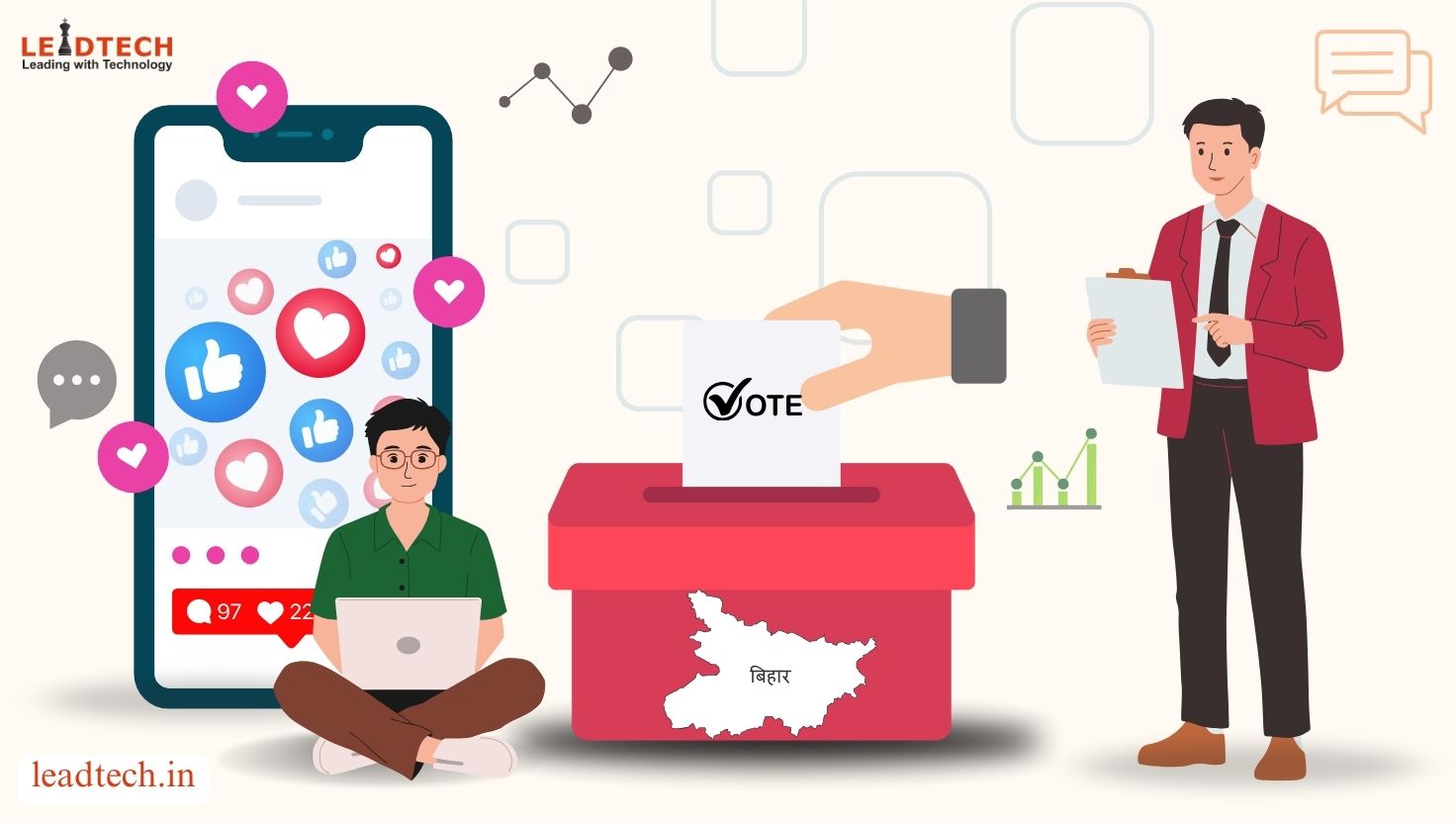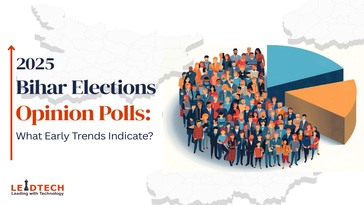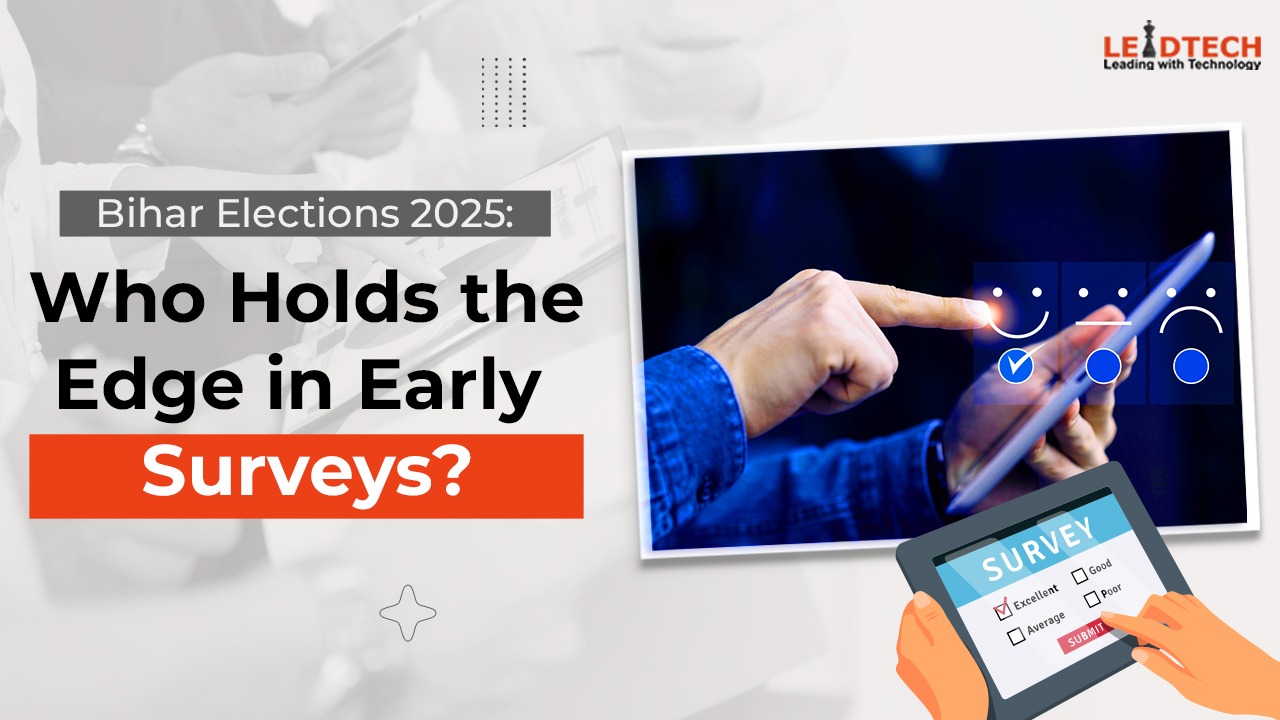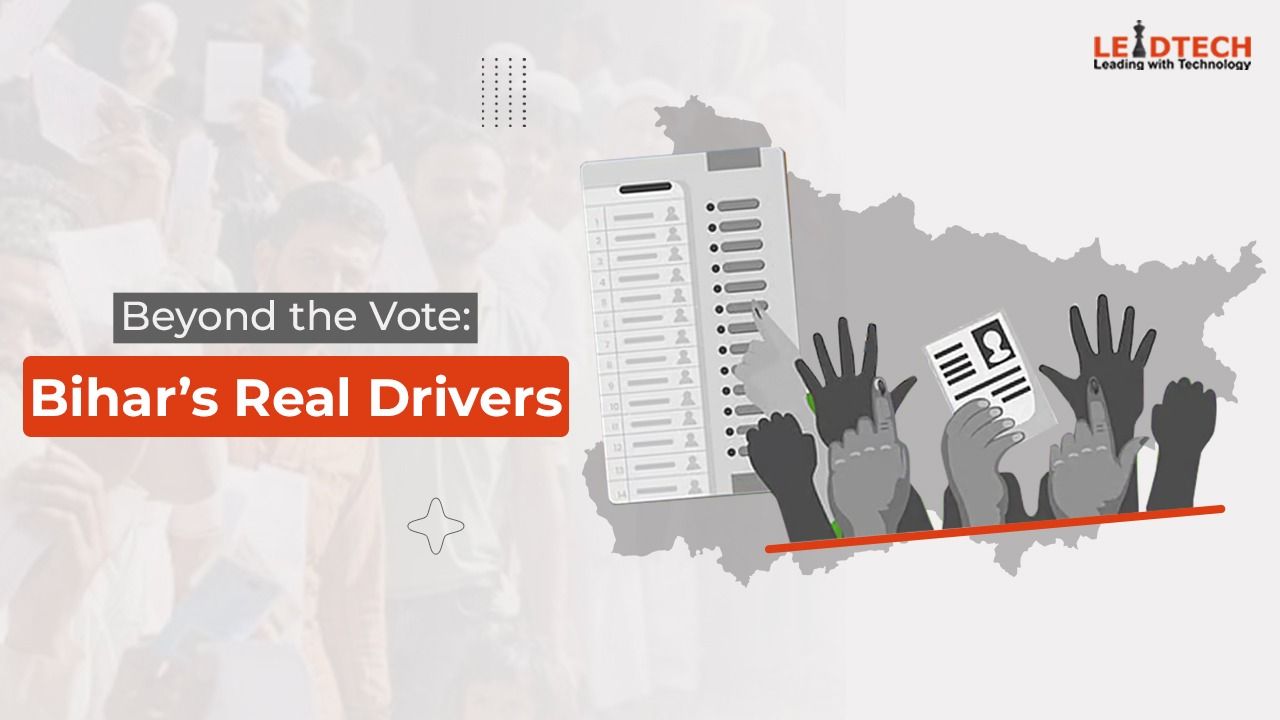
As the 2025 Bihar Assembly Elections approach, the air is thick with anticipation—not just in the crowded bazaars of Patna or the villages of Gaya, but in the buzzing, chaotic world of social media. Platforms like WhatsApp, Instagram, YouTube, and others have transformed Bihar’s political landscape, turning smartphones into battlegrounds where voter sentiment is shaped, controversies explode, and leaders connect with a restless, youthful electorate.
With over 60% of Bihar’s 120 million people under 30, social media is no longer a sideshow—it’s the main stage. From viral campaigns that ignite hope to misinformation that sows confusion, these platforms are redefining how Bihar’s 243 constituencies will choose their leaders. Let’s dive into the electrifying role of social media in the 2025 elections, exploring how it shapes voter sentiment, amplifies controversies, empowers leaders to reach the youth, and navigates the tricky waters of viral campaigns and misinformation in Bihar’s vibrant electoral discourse.
Social Media’s Rise in Bihar: A New Political Frontier
Bihar’s political history is steeped in caste alliances, fiery rallies, and grassroots campaigns. But in 2025, social media has added a new layer to this mix. With over 50 million smartphone users in the state and internet penetration growing to around 40% (as of 2024), platforms like WhatsApp, Instagram, and YouTube are now as critical as village chaupals.
Social media offers unfiltered, real-time access to voters, bypassing traditional media’s gatekeepers and enabling parties to craft narratives that hit home instantly.
In a state where caste, economic challenges, and youth aspirations drive politics, social media amplifies these dynamics. It’s where a farmer in Purnia shares his struggles, a student in Patna debates job policies, and a leader’s misstep becomes a statewide scandal in hours.
Political parties—be it the National Democratic Alliance (NDA), Mahagathbandhan, or newcomers like Jan Suraaj—are investing heavily in digital strategies, hiring influencers, content creators, and data analysts to sway voters. But this digital frontier is a double-edged sword, offering both unprecedented opportunities and risks that can make or break campaigns.
Shaping Voter Sentiment: The Pulse of Bihar’s People
Social media is Bihar’s new pulse-taker, capturing the hopes, frustrations, and dreams of its people. Platforms allow parties to gauge real-time sentiment on issues like unemployment, migration, and caste-based reservations, which dominate the state’s discourse. For instance, posts about job creation or infrastructure delays often trend, forcing leaders to respond quickly. A viral video of a pothole-ridden road in Muzaffarpur can spark thousands of comments, amplifying public frustration and pushing parties to address local grievances.
The youth, in particular, are driving this shift. With 60% of Bihar’s population under 30, social media is their megaphone. Platforms like Instagram and YouTube host debates on issues like the demand for a caste census or the state’s lag in IT development. Leaders who tap into these conversations—through live sessions, Reels, or WhatsApp groups—can sway young voters who feel ignored by traditional politics. Social media’s immediacy also makes it a barometer of public mood, helping parties adjust campaigns on the fly, whether it’s highlighting Nitish Kumar’s governance or Tejashwi Yadav’s job promises.
However, this power to shape sentiment cuts both ways. Social media often amplifies polarized views, with caste-based rhetoric and regional divides dominating discussions. Hashtags like #BiharNeedsChange or #NitishFailed can polarize voters, creating echo chambers that deepen mistrust between communities. In a state as diverse as Bihar, this can fuel tensions, making social media a volatile force in shaping voter sentiment.
Amplifying Controversies: From Local Whispers to Statewide Storms
Social media’s ability to turn small incidents into major controversies is a defining feature of Bihar’s 2025 elections. A prime example is the Rahul Gandhi luxury toilet controversy during his June 2025 visit to Dashrath Manjhi’s family in Gaya. Allegations spread that a high-end toilet was built near the Manjhi family’s mud hut for Gandhi’s convenience, sparking outrage. Within hours, posts and WhatsApp forwards branded Gandhi a “hypocrite,” accusing him of preaching pro-poor values while indulging in elite comforts. Memes juxtaposing the Manjhi family’s poverty with Gandhi’s alleged privilege went viral, with hashtags trending across platforms.
This incident shows how social media can amplify a local event into a statewide narrative. The controversy overshadowed Gandhi’s broader agenda—his push for a caste census and outreach to Dalits and EBCs—damaging Congress’s image among voters who revere Manjhi’s legacy. While Congress supporters countered that the claims were unverified and part of an NDA smear campaign, their posts struggled to match the viral outrage. The episode highlights social media’s power to shape perceptions, often before facts are fully established.
Other controversies, like allegations of Nitish Kumar’s governance failures or Tejashwi Yadav’s ties to past “Jungle Raj,” also gain traction online. These narratives, fueled by memes and short videos, can sway undecided voters, especially in rural areas where social media is often the primary news source. The challenge for parties is managing these firestorms, as a single viral post can undo weeks of campaign work.
Connecting with the Youth: Leaders on the Digital Stage
Bihar’s youth are the heart of the 2025 elections, and social media is their playground. Leaders who master these platforms can build powerful connections with this demographic. The NDA, Mahagathbandhan, and smaller players like Jan Suraaj are all vying for the youth vote, using tailored content to stand out.
The NDA leverages YouTube and Instagram to highlight infrastructure projects like expressways and smart cities, with polished videos showcasing Nitish Kumar’s governance. These posts, often shared by party supporters, aim to appeal to urban youth seeking development. The Mahagathbandhan, led by Tejashwi Yadav, uses Instagram Reels and WhatsApp to push promises like 85% reservation and job creation. Tejashwi’s Reels, often in Bhojpuri, connect with rural youth, blending policy talk with cultural pride.
Prashant Kishor’s Jan Suraaj Party, a new entrant, uses YouTube live sessions to discuss governance reforms, appealing to urban, educated youth. Similarly, the Aam Aadmi Party (AAP) shares videos of Arvind Kejriwal’s Delhi model, pitching it as a blueprint for Bihar. These efforts show how social media levels the playing field, allowing smaller parties to compete with established giants.
Social media also fosters direct engagement. Leaders host live Q&A sessions, reply to comments, and share behind-the-scenes glimpses of their campaigns, making them more relatable. This accessibility is key in a state where youth feel disconnected from traditional leaders. However, it’s a high-stakes game—missteps, like an insensitive post or a poorly timed comment, can go viral, alienating young voters.
🗳️ “Elections aren’t just won on the ground—they’re won in the scroll!”
If you’re serious about making digital waves in Bihar’s 2025 elections—don’t just post, influence.
📞 Call now to connect with our election strategy experts and lead the digital narrative!
The Power of Viral Campaigns: Hype and Hope
Viral campaigns are the new currency of Bihar’s elections, turning ideas into movements overnight. Parties are investing in influencers, memes, and short-form content to capture attention. The NDA’s campaigns, with hashtags promoting Nitish Kumar’s achievements, use drone-shot videos and infographics to project progress. The Mahagathbandhan counters with posts highlighting unfulfilled promises, using emotional appeals to connect with voters frustrated by unemployment and migration.
Smaller parties excel here too. Jan Suraaj’s policy-focused videos, often shared via WhatsApp, have sparked debates among urban voters, while AAP’s campaign videos draw parallels between Delhi’s schools and Bihar’s needs. These campaigns thrive on relatability, using local languages and cultural references to resonate with Bihar’s diverse audiences.
But viral campaigns can backfire. A campaign that feels inauthentic—like overly polished ads ignoring rural realities—can alienate voters. The Rahul Gandhi toilet controversy, for instance, was amplified by viral memes that damaged Congress’s credibility. Parties must balance creativity with authenticity to ensure campaigns inspire rather than inflame.
The Misinformation Threat: A Dark Side of Digital Politics
Misinformation is a major challenge in Bihar’s 2025 elections, where low literacy rates (around 61%) make voters vulnerable to false narratives. Social media’s open nature allows rumors to spread like wildfire. The Rahul Gandhi toilet row, for example, gained traction despite lacking mainstream verification, with doctored images and exaggerated claims fueling anger. Similarly, false posts about Nitish Kumar’s governance or Tejashwi Yadav’s policies have circulated, often tailored to exploit caste and regional divides.
A 2024 study found that 30% of election-related content on Indian social media contains misleading information, a problem acute in Bihar where WhatsApp groups are key news sources. Posts claiming fake promises—like free gadgets from candidates—can sway rural voters before being debunked. Parties are also accused of orchestrating misinformation, with the NDA and Mahagathbandhan allegedly using digital operatives to spread rival-bashing narratives.
The Election Commission is cracking down, collaborating with platforms to flag harmful content and issuing guidelines for digital campaigns. But policing social media’s vast ecosystem is tough. Fact-checking initiatives exist, but their reach is limited compared to viral falsehoods. This misinformation minefield threatens Bihar’s electoral integrity, as unverified narratives can shape voter perceptions before facts emerge.
Reshaping Electoral Discourse: Opportunities and Challenges
Social media is redefining Bihar’s electoral discourse, making it more dynamic but also more divisive. Platforms enable real-time debates on critical issues, forcing parties to address voter concerns quickly. They also democratize politics, giving smaller players a voice against giants like the NDA and Mahagathbandhan. But the risk of polarization is high, with caste-based slurs and inflammatory rhetoric often dominating online spaces, threatening Bihar’s social harmony.
Parties must navigate these challenges strategically. Effective digital teams, rapid crisis response, and authentic content are essential to harness social media’s potential while mitigating risks. The Election Commission’s role is critical, but stronger partnerships with platforms and fact-checkers are needed to curb misinformation.
Conclusion: Bihar’s Digital Destiny
The 2025 Bihar Assembly Elections are a landmark moment for social media’s role in Indian politics. Platforms like WhatsApp, Instagram, and YouTube are shaping voter sentiment, amplifying controversies, and connecting leaders with Bihar’s youth. Viral campaigns ignite hope, but misinformation casts a shadow, threatening the fairness of the electoral process.
As Bihar heads to the polls, social media will be a decisive force, from trending hashtags to viral videos. The challenge for parties is to wield this power responsibly, balancing creativity with credibility. In a state brimming with potential and complexity, social media isn’t just shaping elections—it’s shaping Bihar’s future.





